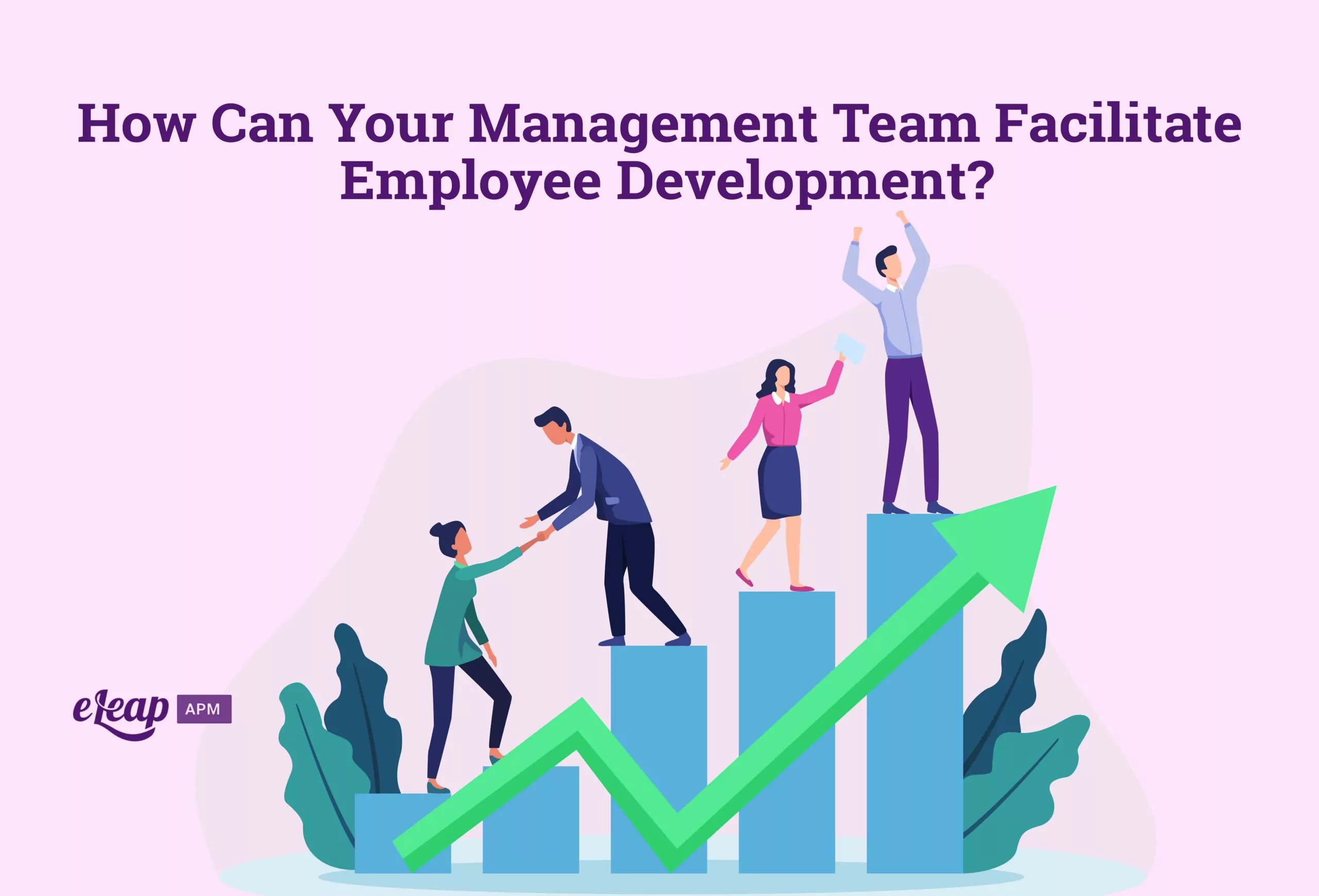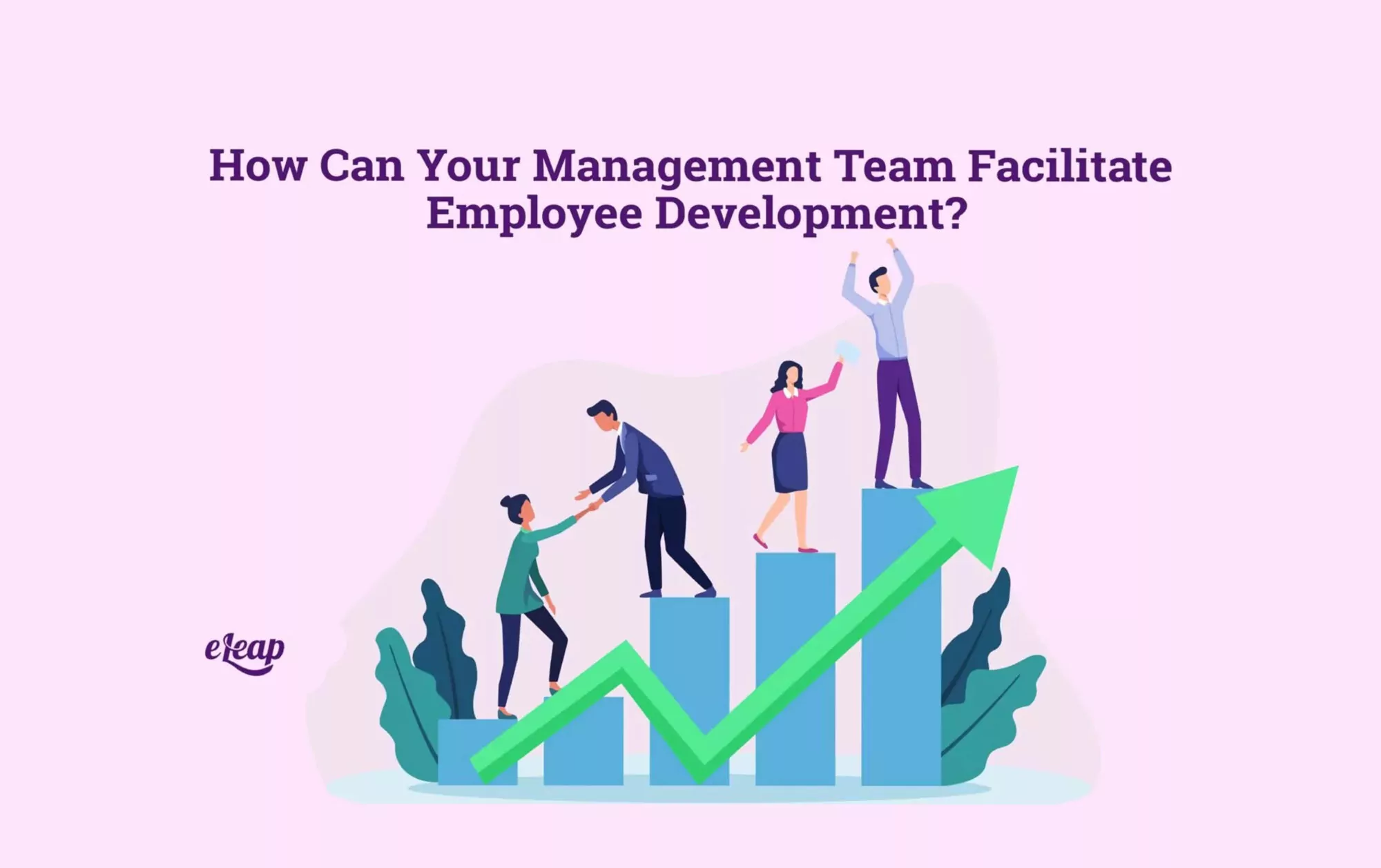How Can Your Management Team Facilitate Employee Development?

Some professions think of employee development as hours of classes on topics that barely relate to their jobs. Everyone was expected to learn the same thing. The seminars were usually long and boring. This is far from the truth. It is on management to help facilitate employee development in the organization. The fact is the benefit of doing this far outweighs the cost.
Some professions tie retaining professional licensing to participation in Facilitate Employee Development classes. Most of us didn’t choose our careers, expecting to sit through hours of lectures later. Some of us have the job we dreamed of from childhood.
Others of us, however, are constantly reassessing our choices. Maybe we didn’t know what we wanted to do when we grew up. Perhaps we changed our minds multiple times along the way. It’s also possible we still don’t know what we want to do with our lives.
As managers, you must realize your employees constantly assess their career choices. Your job is to guide your employees in their development process. You are the motivator, the informer, and the one who provides feedback.
What Is Employee Development
Employee development is where employees strive to gain knowledge and skills to improve their careers. The employee goes through training that is pertinent to their current field, or they pursue new learning opportunities to help them change fields.
Employee development isn’t for a particular role within the company. Instead, employee development is educational opportunities that advance the employee along their career path. Individuals should take ownership of their own Facilitate Employee Development.
Making employee development a priority allows team members to continue to grow and change with industry standards.

How Employee Development Is Changing
In past years, when people were hired into a company, their career path was set by their job title. Over time, companies downsized, and the way up the ladder changed.
Long-term relationships between companies and employees have virtually disappeared. Once, job hopping was considered evidence of poor work ethic. Now, people can’t imagine working for the same company their entire working life.
The stigma of job hopping has decreased; even those in professional careers change jobs more frequently. According to CareerBuilder, approximately 45% of college graduates leave their jobs within two years. In that same survey, they determined that a quarter of workers will have at least five jobs before age 35.
Employees dissatisfied with their career development can more easily leave the company. They then easily get a different job with a salary increase.
The Manager’s Role in Employee Development
It’s been said that employees leave managers, not companies. When a manager is supportive and helps employees to succeed, the employee will stay and flourish. One of the primary reasons employees choose to quit a job is the lack of Facilitate Employee Development.
As a manager, your goal is to improve employee motivation and retention. Therefore, you must be intentional about investing in Facilitate Employee Development.
You want to assist your employees with identifying and progressing along their career paths. How do you do that with the current changes in career development? It begins with communication.
In an ideal situation, you will keep the lines of communication open with your employees. Those lines of communication should include regular meetings with each employee. Perhaps you do performance reviews regularly or do project updates.
Most entry-level employees likely consider this job a stepping stone to their ideal career. What would be their dream job, though? As a manager, you can help them determine the skills they need for their dream job. Does their current job provide any of those skills?
You can help employees acquire appropriate skills by assigning them projects that match their goals. Connect them with someone in another department that already has the skills they need. Foster mentorship between the two people. Perhaps you can connect them with an opportunity to volunteer in the community to develop the skills they need.
An Adjusting Career Path
Career paths have changed. Now, the role isn’t the goal; skills are the goal. As part of helping your employees develop their skills, advocate for their continued learning.
Advocate Continued Learning:
Technology has become a mainstay for virtually every industry. Technology is constantly changing, and employees must continue learning new skills to stay up-to-date with technological advancements.
In a survey of US workers by Udemy, 84% of those surveyed believe there is a gap in skills. At least 51% of those surveyed would quit a job if they didn’t have adequate training. Employees should take ownership of their learning. However, managers need to provide opportunities for training.
As management, you know the value of soft skills. Companies encourage creativity and collaboration, so employees need to communicate effectively and be empathetic. Employees’ soft skills can be transferred to basically any career they choose.
Individual Contributors Are Valuable
In the past, if you wanted to advance in your career, you had to move into management. It was believed that if you excelled in your position, you would be just as successful in a leadership role.
Unfortunately, that isn’t always how it works. A self-motivated salesperson gets to the top of their game by being competitive. However, that doesn’t mean they are good motivators or team players. A different skill set is needed to manage a team of performance managementfully.
Don’t discount the skills of a self-motivated employee, though. They bring valuable experience and ideas to the company table. Some companies are wisely addressing the value of the contribution from these go-getters. They have created ways for them to use their expertise without dealing with managing people.
Help Your Employees Find Their Niche within the Company
Entry-level employees, in particular, may have a hard time matching their seeing how their job relates to the company. It’s part of your job as the manager to help them see that perspective.
How do you help employees understand your perspective? Discuss company goals. In the discussion, include why those goals were chosen and their importance. Explain why they make a difference.
Talk about relevant company news and explain why the news is relevant. Talk to employees about chances for development within their department or other departments. Help employees see why they are valuable to the company and how they can progress with the company.
In a structured manner, help employees see why they do their tasks. This perspective will help them see that their work matters.
Each year set your periodic objectives for the company. Name the key results you expect to see concerning those objectives. Have each team set its team objectives for the year. Follow that by having each employee set personal goals.
By helping employees and teams create their own objectives, you have assisted in connecting individual goals with the main company goal. Set up a system of metrics that help to measure the goals. Each person can then track their own progress. Tracking your own progress allows you to focus on the skills you have while still building additional skills.
Why Should You Invest in Employee Development?
Investing in employee development may seem like you are helping employees leave your company. However, the investment benefits you. Employees will master skills they already have and use them in their current position.
Developing their skills will make them more confident in their duties. Confidence will cause greater engagement with their current job. The skill development gives their work increased value, which in turn benefits your company.
The development opportunities you offer can attract more job candidates to your open positions. Job seekers and current employees value development opportunities and look for them when seeking employment. Here are some more reasons to invest in employee development:
- Lack of career growth causes employees to leave.
- Employee development leads to the retention of employees.
- Employee development allows employees to reach their full potential at work.
- Many employees will stay where the company invests in employee development.
- Employees who participate in learning opportunities are more productive.
- Companies that choose to invest in employee development earn more profits.
Creating A Strong Plan for Employee Development
Investing in employee development shows your employees you care about them. When you facilitate their professional growth, employees feel valued. Do you currently have an employee development plan in place? If not, you must create one.
The first step in creating an employee development plan is customizing it for your team. Factors to consider when creating your plan include your industry and staff size. You should also consider learning styles, subject matter, preferences, and accessibility. Your program must appeal to your employees for them to find value in it. Use these steps to help you create and implement your program.
- Assess the long-term goals of your company.
- Develop plans that are tailored to your employees.
- Create company-wide professional development opportunities.
- Use evaluation and feedback to gauge the success of your plan.
The Bottom Line
Employee development has changed in recent years. Employees now seek positions that offer development opportunities. Providing employee development opportunities helps your team improve engagement and productivity. In turn, your business will see greater productivity.